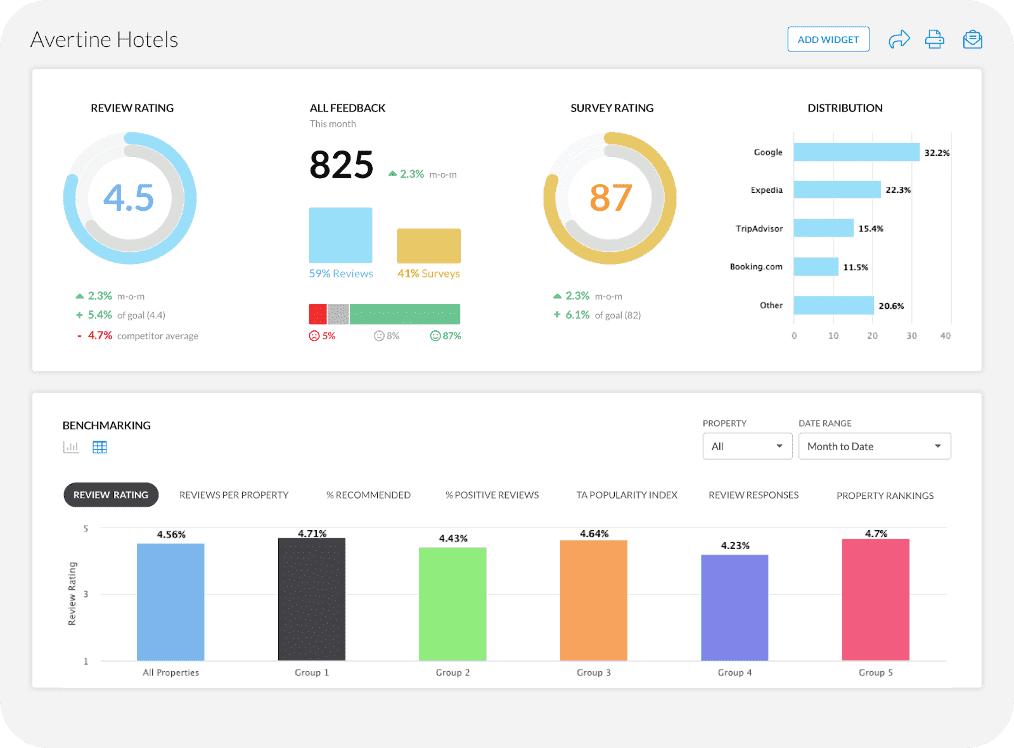Did you know that React runs on 4.8% of websites globally? This makes React one of the major JavaScript libraries. Moreover, React has 5.9% of the global market share of the JavaScript library, thus, it’s still a favorite of developers. Hence, React has solidified its position as the premier JavaScript library for building responsive user interfaces.
On the other hand, AI is becoming a requirement that every business wants. Imagine React apps that can analyze sentiment and recommend content in real time. Moreover, React apps recognize images and respond to voice commands.
In this CodingCops guide, we’ll explore how developers can combine AI into React applications to create apps that aren’t just functional but intelligent.
Why Combine AI With React?
React’s rich user interface capabilities and AI’s intelligence are combined to provide developers the best of both worlds. AI may also improve personalization by customizing content according to user choices and behavior. Additionally, developers can apply this combination to create recommendation engines and chatbots.
Also, developers can build intuitive interfaces with features like voice commands and predictive typing. Furthermore, AI can automate repetitive tasks and free up human time, and reduce errors.
AI Use Cases in React Apps
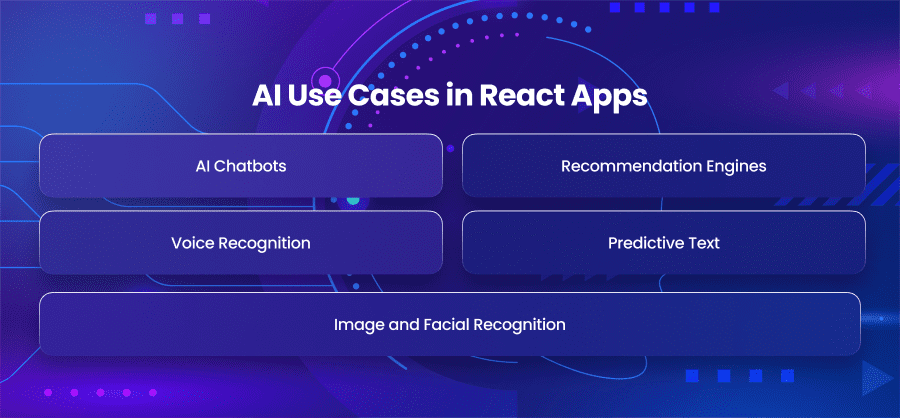
AI Chatbots
Chatbots are perhaps the most visible integration of AI into web apps. Developers can build bots that can understand user intent and provide relevant responses using platforms like Dialogflow or custom NLP models.
Furthermore, in React, these bots can be integrated as components that can be easily styled and adapted to different screens. Hence, a simple integration can provide 24/7 customer support.
Recommendation Engines
Both Netflix and Amazon like personalization. Moreover, using AI, developers analyze user data and deliver personalized product or content suggestions. Additionally, TensorFlow or third party APIs can crunch user behavior data and serve smart recommendations within React components.
Image and Facial Recognition
Furthermore, tools like AWS Rekognition and Google Vision can enable React apps to interpret images uploaded by users. Therefore, developers can build features like user verification and AR experiences.
Voice Recognition
React developers use the Web Speech API or tools like AssemblyAI and Wit.ai to handle voice commands and transcriptions. Hence, this is especially useful in accessibility or mobile-first applications.
Predictive Text
Another use case of AI in React is predictive text. Moreover, AI can enhance form inputs and search boxes by predicting texts as the user types. Moreover, this can be implemented using machine learning models via APIs or TensorFlow. Hence, this makes your app feel smarter and more responsive.
Tools and Libraries to Bring AI into React
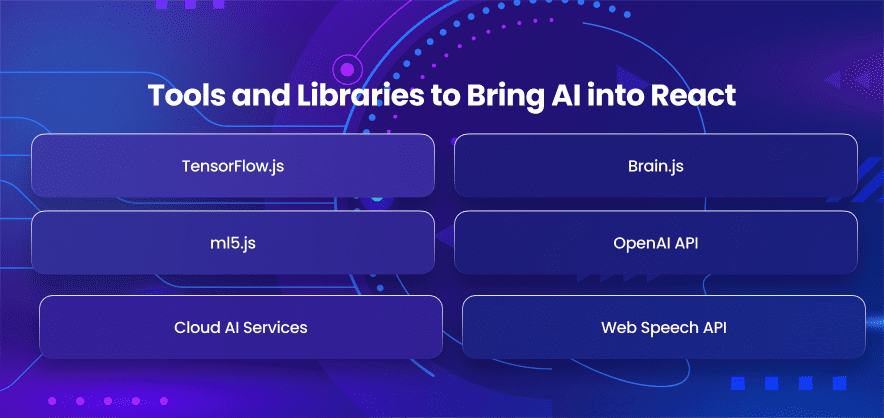
TensorFlow.js
This library brings the power of TensorFlow to JavaScript. Moreover, it allows developers to train and run machine learning models directly in the browser or under Node.js. Additionally, it runs entirely on the backend. Also, it can be used for complex ML tasks like image classification and natural language processing.
Brain.js
A simpler neural network library written in JavaScript. Moreover, Brain is perfect for small and real-time prediction and classification tasks without overwhelming complexity. Additionally, as it’s lightweight, it’s easy to integrate with minimal learning curve.
ml5.js
ml5 is a wrapper built on top of TensorFlow. Additionally, it offers already trained models that are accessible to other experts. Hence, it’s a great choice for developers who want to add AI features without going into the math.
OpenAI API
OpenAI APIs provide access to some of the most powerful language and vision models available, like GPT-4 and BERT. Moreover, Hugging Face also allows developers to host and deploy their models.
Cloud AI Services
Cloud AI services offer enterprise-grade solutions like computer vision and speech recognition capabilities through secure APIs. Moreover, they are secure and reliable and have extensive documentation and SDKs.
Web Speech API
The Web Speech API provides capabilities for speech recognition and synthesis directly in the browser. Therefore, developers don’t need other libraries as the Web Speech API is natively supported in most browsers.
How to Integrate AI into React Apps?
Developers begin by creating a new React app using the create-react-app tool. Furthermore, they then build a simple form where users can input text to be analyzed for sentiment. Hence, this helps collect user input for processing.
Then they use platforms like Hugging Face to access already trained models for sentiment analysis. Additionally, developers typically need an API token and endpoint URL. Next, developers implement asynchronous functions in the React app to send user input to the API and receive a response. They do this with fetch and axios.
Moreover, after the sentiment is returned, they display the result in the UI using React state to update the component. Finally, developers ensure the React app can handle failed API calls effectively and provide visual cues like loaders or error messages.
Best Practices for Smart AI Development in React
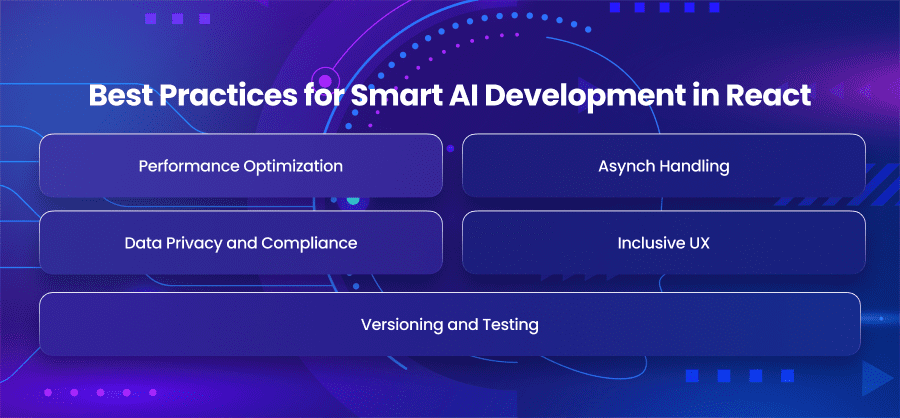
Performance Optimization
If you want to optimize your React app’s performance, you can use lazy loading for AI modules to avoid increasing the initial bundle size. Moreover, you can offload heavy computations to the background processes using Web Workers or move them back to the backend.
Asynch Handling
Another tip is to provide visual feedback like loaders or progress bars while fetching AI predictions. Also, efficiently handle API errors or failed predictions to maintain an excellent user experience.
Data Privacy and Compliance
The next tip is that you must secure all API keys using environment variables and proxies. Additionally, you should avoid storing user data on the client side. Moreover, sensitive data must always be encrypted before transmission. Furthermore, you should comply with privacy regulations like GDPR if you’re dealing with user data.
Inclusive UX
Moreover, design AI features that are accessible for users with disabilities. Moreover, you can offer non-AI alternatives for critical tasks so users can choose their preferred method.
Versioning and Testing
AI models evolve. Hence, ensure to version your models or APIs. You can write automated tests for components interacting with AI to ensure stability during updates.
Challenges of AI in React
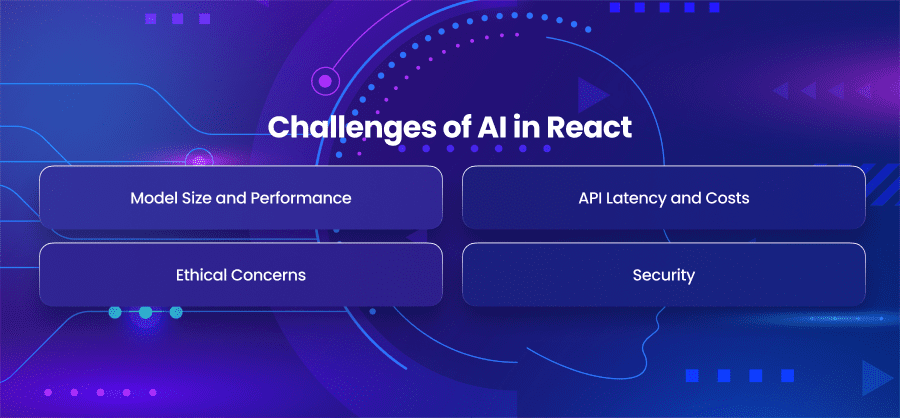
Model Size and Performance
If you run a large model like GPT or deep CNNs in the browser, they can slow down performance or crash the app on some devices.
API Latency and Costs
Furthermore, AI APIs can be expensive depending on usage volume. Hence, you can consider caching and batching requests to optimize cost and latency.
Ethical Concerns
Biased models can result in discriminatory outcomes. Moreover, always audit your models for fairness and test across diverse data samples.
Security
If you don’t sanitize your user inputs, you cannot avoid injection attacks. Hence, you should validate your responses from AI APIs before rendering them on the client side.
Conclusion
The intersection of AI and React is opening doors to a new era of smart and highly personalized web applications. Hence, by integrating AI features like chatbots and predictive typing, developers can considerably improve their apps.













